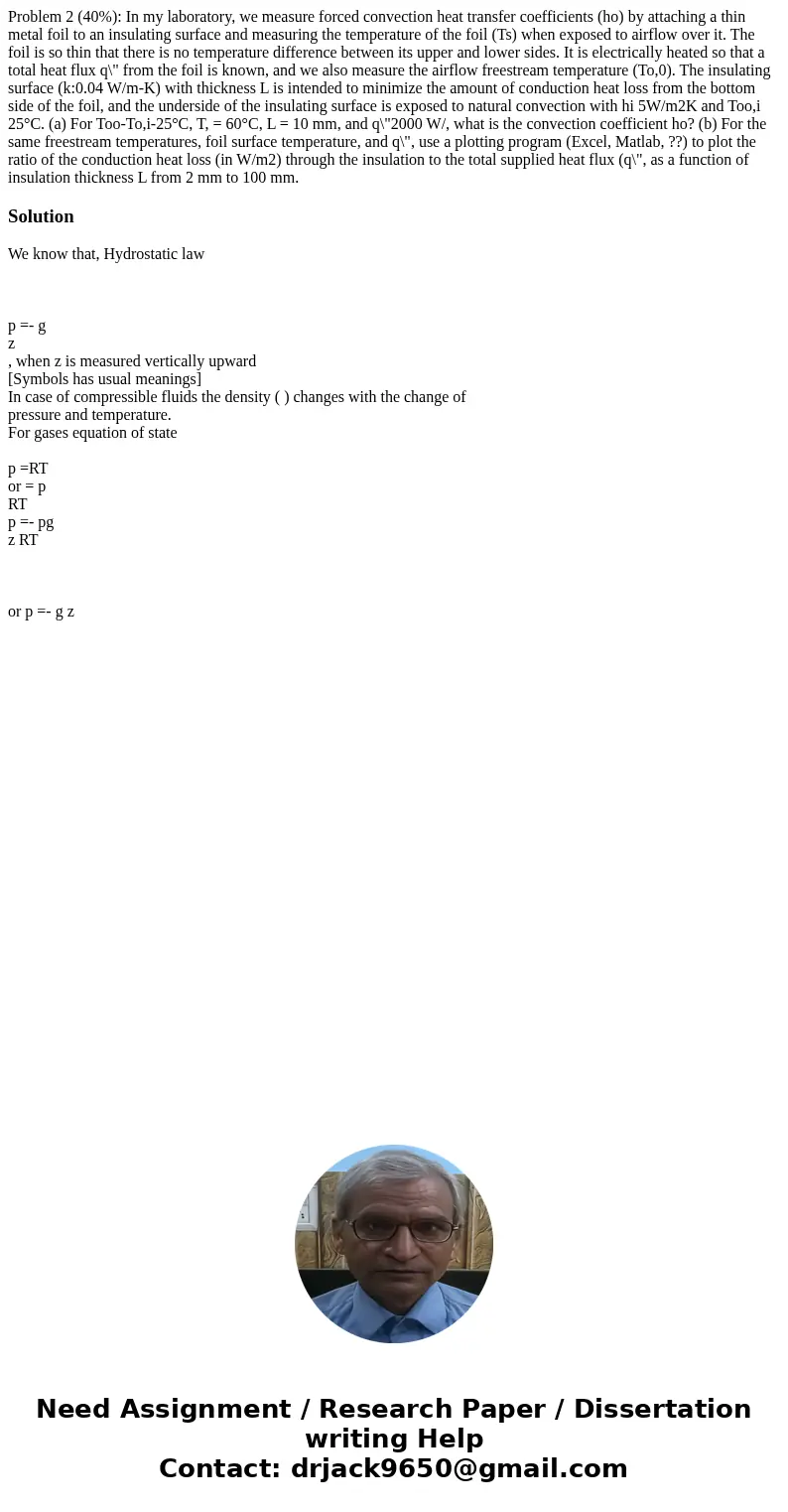Problem 2 40 In my laboratory we measure forced convection h
Problem 2 (40%): In my laboratory, we measure forced convection heat transfer coefficients (ho) by attaching a thin metal foil to an insulating surface and measuring the temperature of the foil (Ts) when exposed to airflow over it. The foil is so thin that there is no temperature difference between its upper and lower sides. It is electrically heated so that a total heat flux q\" from the foil is known, and we also measure the airflow freestream temperature (To,0). The insulating surface (k:0.04 W/m-K) with thickness L is intended to minimize the amount of conduction heat loss from the bottom side of the foil, and the underside of the insulating surface is exposed to natural convection with hi 5W/m2K and Too,i 25°C. (a) For Too-To,i-25°C, T, = 60°C, L = 10 mm, and q\"2000 W/, what is the convection coefficient ho? (b) For the same freestream temperatures, foil surface temperature, and q\", use a plotting program (Excel, Matlab, ??) to plot the ratio of the conduction heat loss (in W/m2) through the insulation to the total supplied heat flux (q\", as a function of insulation thickness L from 2 mm to 100 mm. 
Solution
We know that, Hydrostatic law
p =- g
z
, when z is measured vertically upward
[Symbols has usual meanings]
In case of compressible fluids the density ( ) changes with the change of
pressure and temperature.
For gases equation of state
p =RT
or = p
RT
p =- pg
z RT
or p =- g z

 Homework Sourse
Homework Sourse